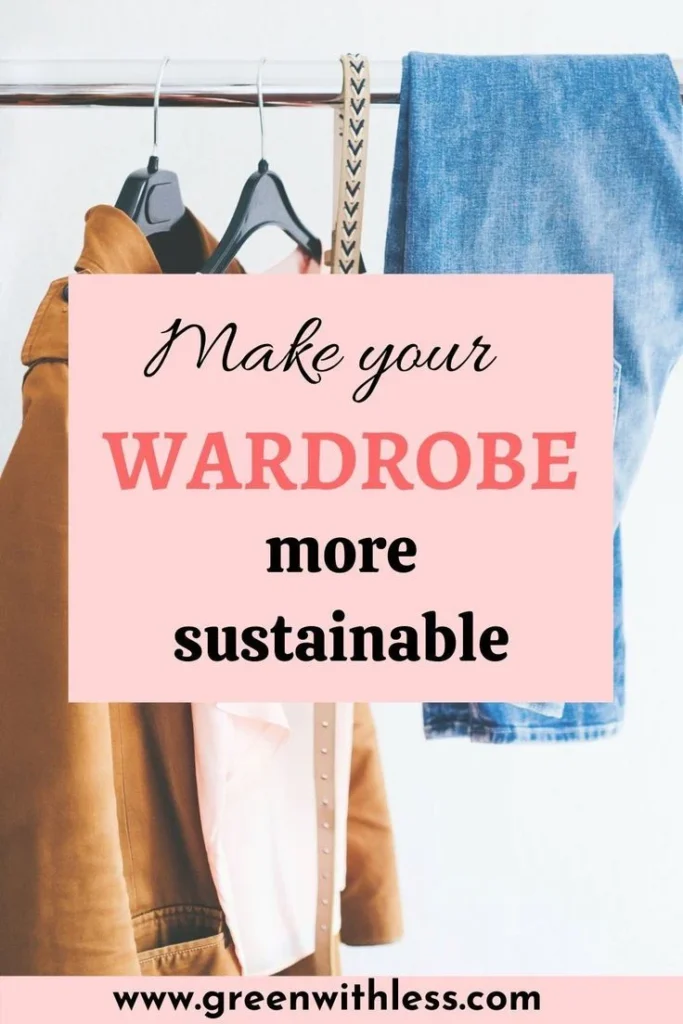Sustainable fashion is a growing trend that focuses on creating clothing in an environmentally and socially responsible manner. Building an eco-friendly wardrobe is a key part of sustainable fashion, and it involves choosing clothing made from sustainable materials, supporting ethical and fair trade practices, and embracing a minimalist approach to consumption. By incorporating sustainable fashion into our wardrobe choices, we can reduce our environmental impact and support a more ethical and responsible fashion industry.
When it comes to building an eco-friendly wardrobe, there are a variety of alternative options to consider. From choosing clothing made from organic cotton, hemp, or bamboo to supporting brands that prioritize ethical labor practices and fair wages, there are many ways to make more sustainable fashion choices. Additionally, embracing second-hand and vintage clothing, as well as participating in clothing swaps and rental services, can also reduce the environmental impact of our wardrobe while still allowing us to express our personal style.
Sustainable Fashion: An Introduction
Sustainable fashion is a growing movement that aims to minimize the environmental impact of clothing production and consumption. It encompasses various practices, including using eco-friendly materials, reducing waste, and promoting ethical labor practices. Building an eco-friendly wardrobe is an important step towards supporting sustainable fashion and reducing your carbon footprint.
By making conscious choices about the clothes we buy and wear, we can contribute to a more sustainable and environmentally friendly fashion industry. This can involve choosing high-quality, long-lasting pieces, supporting brands that prioritize sustainability, and engaging in practices such as clothing swaps and second-hand shopping.
Choosing Eco-Friendly Materials
When building an eco-friendly wardrobe, it’s important to prioritize clothing made from sustainable materials. This can include organic cotton, hemp, bamboo, and recycled fibers. These materials require fewer resources to produce, have a lower impact on the environment, and are often biodegradable at the end of their life cycle.
Additionally, choosing natural dyes and avoiding toxic chemicals in the production process can further enhance the eco-friendliness of clothing. Look for certifications such as Global Organic Textile Standard (GOTS) and Oeko-Tex Standard 100 to ensure that the materials meet certain environmental and social criteria.
Reducing Waste through Versatile Pieces
Another key aspect of building an eco-friendly wardrobe is to focus on versatile pieces that can be worn in multiple ways and for different occasions. This approach minimizes the need for excessive clothing consumption and reduces overall waste. Investing in timeless, classic items that can be mixed and matched allows for a more sustainable approach to fashion.
By choosing well-made, durable clothing that withstands trends and seasons, you can contribute to reducing the amount of clothing that ends up in landfills. Additionally, considering the lifecycle of a garment and its potential for repurposing or recycling can further minimize waste in your wardrobe.
Supporting Ethical and Sustainable Brands
When building an eco-friendly wardrobe, it’s important to support brands that prioritize ethical and sustainable practices. Look for companies that are transparent about their supply chain, labor conditions, and environmental impact. Supporting these brands encourages responsible production and helps drive positive change within the fashion industry.
Many sustainable brands also prioritize fair wages, safe working conditions, and overall ethical treatment of workers throughout their supply chain. By choosing to invest in these brands, you can contribute to the promotion of fair labor practices and support the well-being of garment workers around the world.
Engaging in Clothing Swaps and Second-Hand Shopping
Participating in clothing swaps and second-hand shopping is a great way to build an eco-friendly wardrobe while reducing waste. These practices give clothing a second life, diverting items from landfills and minimizing the demand for new production. By exchanging or purchasing pre-loved items, you can contribute to a more circular and sustainable fashion economy.
Clothing swaps also provide an opportunity to refresh your wardrobe without contributing to the environmental impact of new clothing production. Additionally, shopping at thrift stores and consignment shops not only supports sustainable fashion practices but also allows for unique and individualized style expression.
| Step | Description |
|---|---|
| 1 | Assess your current wardrobe and identify items that can be repurposed or recycled. |
| 2 | Invest in timeless, high-quality pieces made from sustainable materials such as organic cotton, linen, or bamboo. |
| 3 | Support ethical and transparent fashion brands that prioritize fair labor practices and environmentally friendly production methods. |
| 4 | Opt for second-hand or vintage clothing to reduce the demand for new production and minimize waste. |
| 5 | Extend the life of your clothes through proper care, such as hand washing, air drying, and mending any damages. |
SONUÇ
Sustainable fashion is about making conscious choices to build a wardrobe that minimizes environmental impact and promotes ethical practices. By repurposing, investing in sustainable materials, supporting ethical brands, choosing second-hand options, and caring for our clothes, we can contribute to a more eco-friendly and responsible fashion industry.

